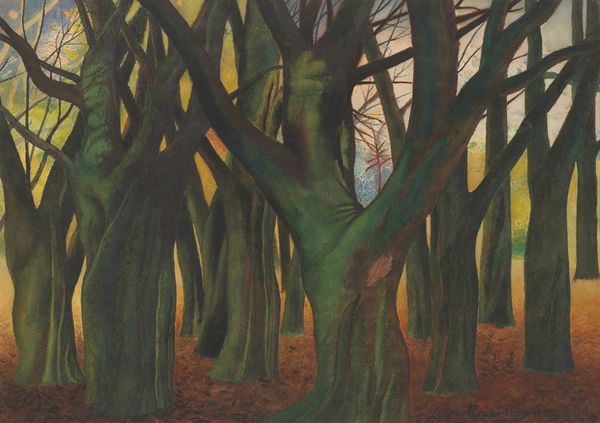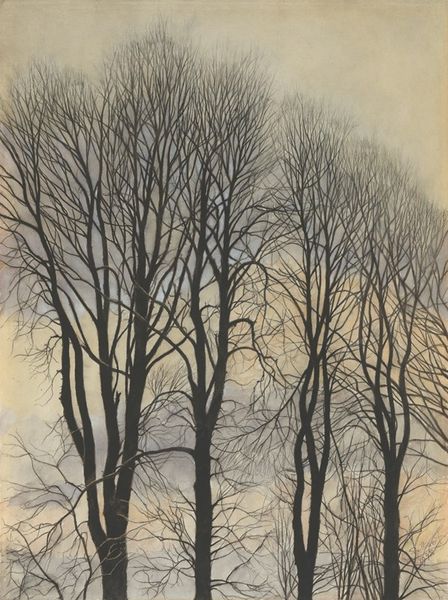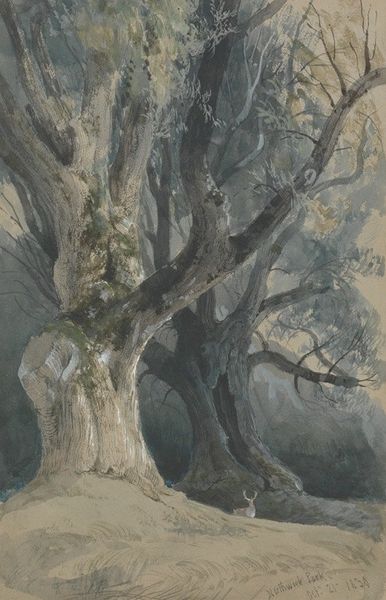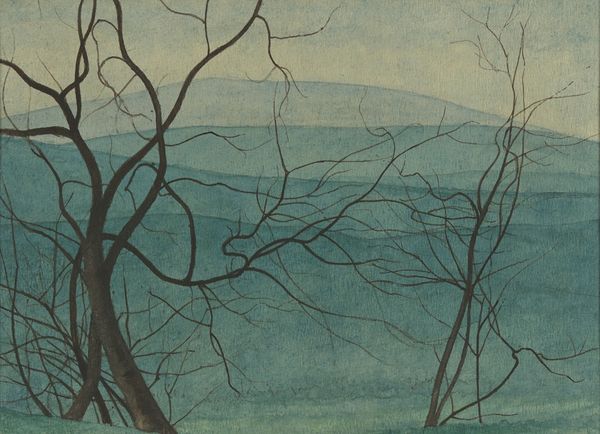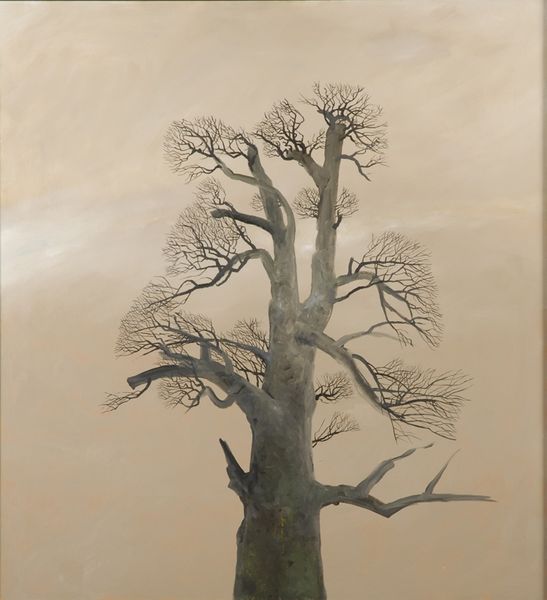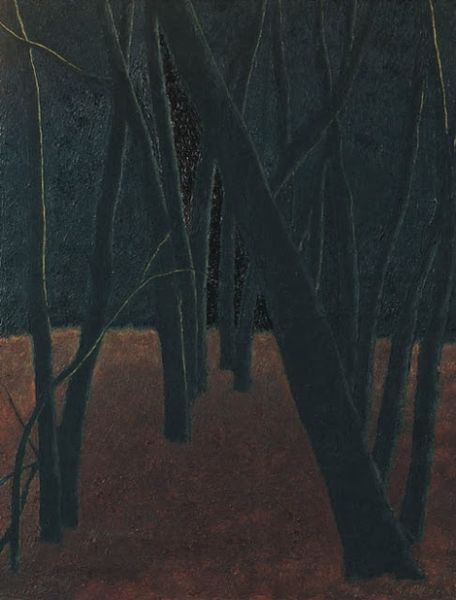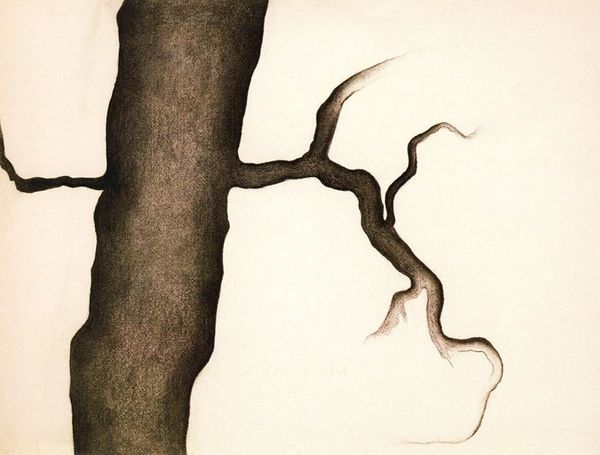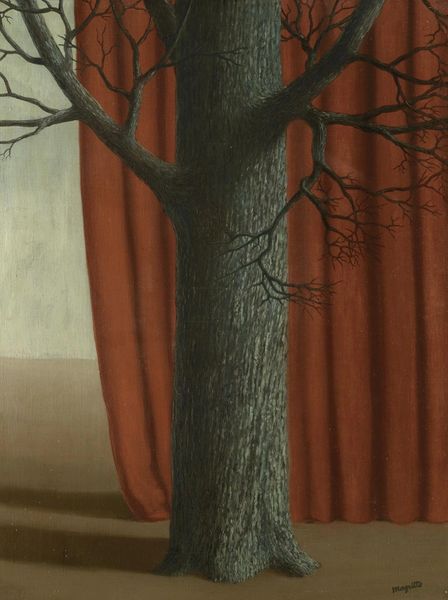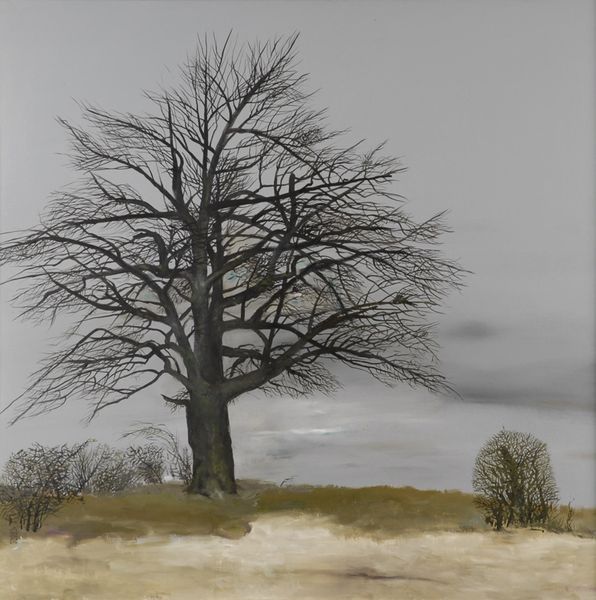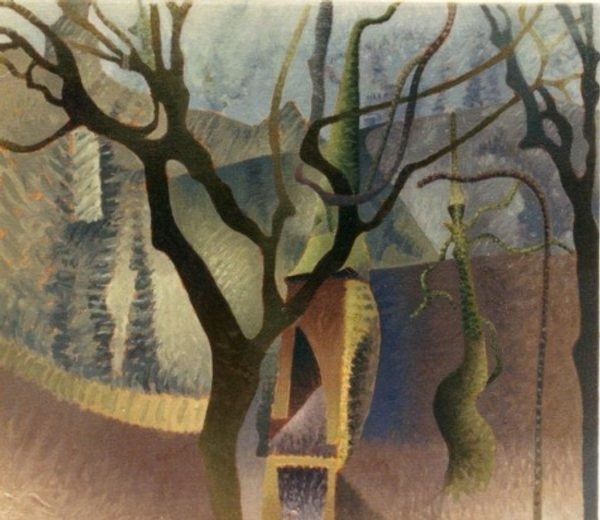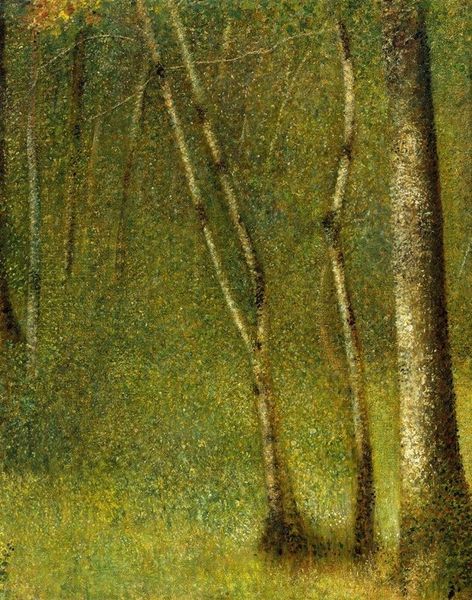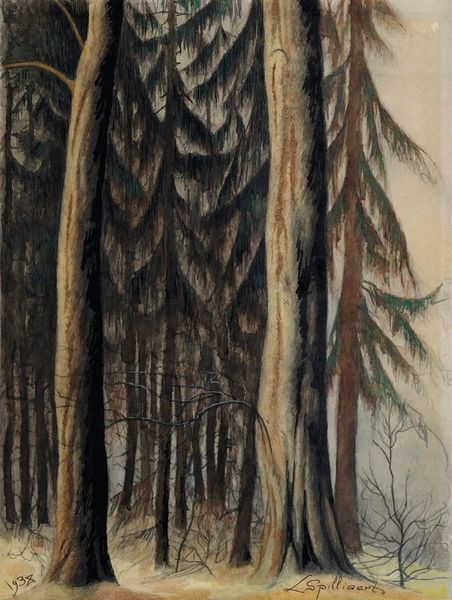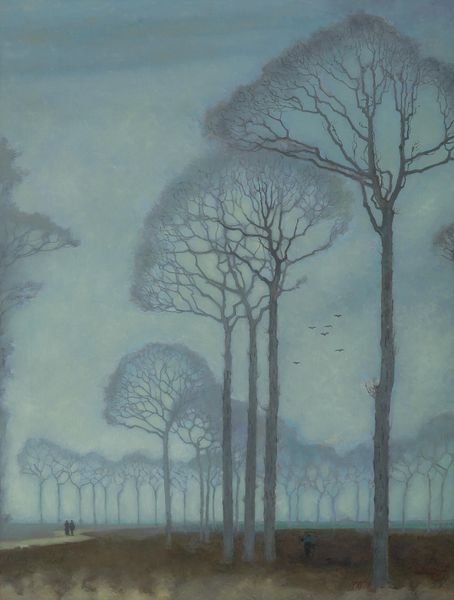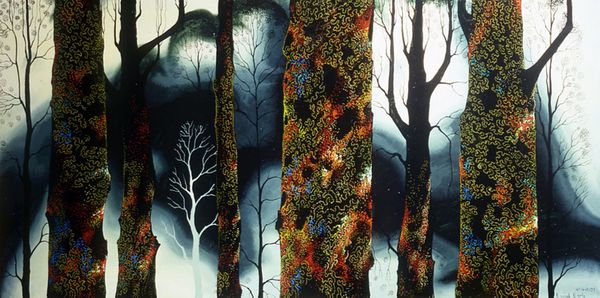
Copyright: Public Domain: Artvee
Editor: So here we have Léon Spilliaert’s "Big Tree" from 1945, created using pencil and graphite. I’m struck by the starkness of the composition and the imposing nature of these trees. What strikes you when you look at this piece? Curator: What I see is a work deeply embedded in its time. Spilliaert, creating this in 1945, is doing so against the backdrop of immense global upheaval. Consider the context: World War II is ending, and the weight of human suffering and resilience is palpable. Does the rigid geometry of these imposing trees not mirror, perhaps subconsciously, the imposing structures of power, institutions, and societal expectations that were being both challenged and reinforced in that era? Editor: That's a fascinating connection I hadn't considered. It's true, there's an almost unnatural order and solidity about them. Do you think he’s commenting directly on those social structures? Curator: Not necessarily a direct commentary, but art is rarely created in a vacuum. Even a seemingly simple landscape like this exists within a framework of social and political realities. The deliberate starkness, the way these trees dominate the landscape – is it a celebration of resilience, or a lament about rigidity? Editor: So you’re saying understanding the social context encourages us to interpret even a landscape through a political and historical lens? Curator: Precisely! Think about how landscapes have historically been used to depict power, ownership, and national identity. Seeing “Big Tree” through that lens enriches our appreciation beyond just its aesthetic qualities. Editor: I see. The power of the trees dominating the space makes more sense now, it goes beyond their visual representation. It speaks to more meaningful structures! Curator: Exactly! Reflecting on this artwork is interesting, not just from artistic value, but seeing how this artwork is inherently an archive of feelings. Editor: Thank you, this perspective of examining art through socio-political contexts will really enrich how I analyze pieces moving forward.
Comments
No comments
Be the first to comment and join the conversation on the ultimate creative platform.
